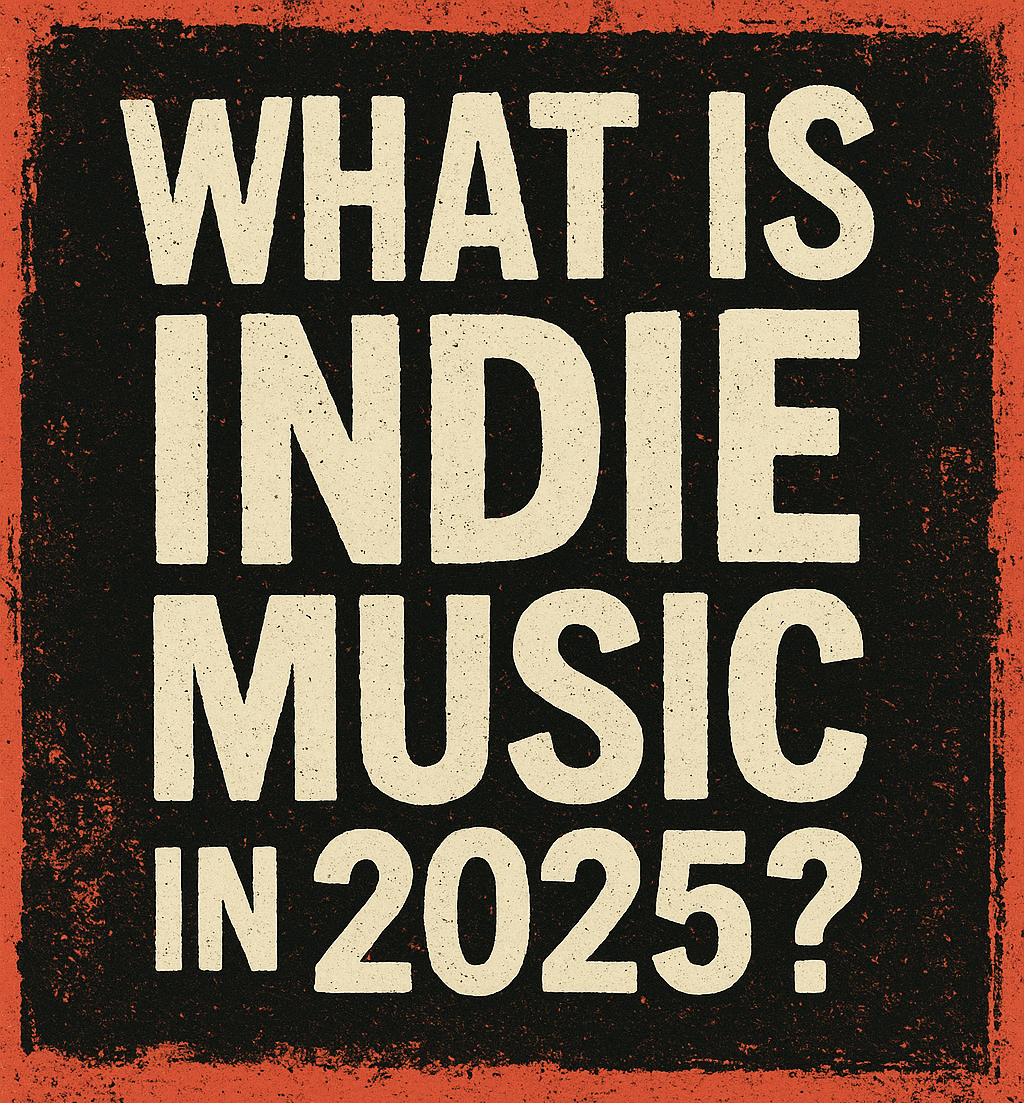How Indie Music Keeps Redefining Itself.
Hey — if you’ve been poking around music blogs, streaming playlists, TikTok, or even just going to shows, you’re probably asking: what the hell does “indie music” mean right now? The label used to be simple: independent labels, DIY production, outsider vibes. But in 2025, indie has expanded, blurred, and kind of exploded. Let’s dig into what “indie” means today — and why it matters.
What “Indie” Used to Mean
Back in the day, “indie” was shorthand for bands like The Smiths, Pavement, Fugazi, or Sleater-Kinney — artists operating outside of the mainstream, often on smaller labels like Rough Trade or Sub Pop, making music that felt raw, risky, and apart from the major label polish1.
It was both a sound and an ethos: jangly guitars, lo-fi recordings, lyrics that didn’t chase radio. If you called yourself indie in the 80s, 90s, or even early 2000s, it was about your independence first and your sound second.
Indie Music in 2025: What’s Changed
Here’s what “indie” means today.
- Genre Fluidity / Micro-Genres
Instead of just indie rock or indie pop, you’ve now got bedroom pop, hyper-folk, glitchy R&B, psych-punk. Artists like Clairo, Arlo Parks, and Yves Tumor prove you can’t box it in2. - DIY + Artist Autonomy
The old “indie label vs major label” divide has melted. Plenty of artists go totally DIY, running their own show with tools like Bandcamp, DistroKid, and TikTok. Think Girl in Red or Black Country, New Road — bands building audiences directly without traditional gatekeepers3. - Authenticity, Intimacy, Imperfection
Fans crave the unvarnished. Where once indie rockers like Guided By Voices wore their tape hiss proudly, today’s artists like Phoebe Bridgers or Soccer Mommy embrace vulnerability, quiet recordings, and lyrics that sting in their honesty4. - Social Discovery + Community
Platforms matter as much as labels now. Bands like Wet Leg or Hotel Ugly blew up because moments went viral, not because they had big PR machines. Discovery is communal, not top-down5. - Tech & Tools Lowering Barriers
Affordable production and AI-aided creativity means anyone can make pro-level tracks at home. This echoes the early DIY spirit of bands like Neutral Milk Hotel, only now the tech is sharper and distribution is instant6. - Indie vs. Mainstream Blurring
Some bands start indie then get scooped up — Arctic Monkeys, The 1975 — and still carry the indie badge. Others like Big Thief remain tied to smaller labels but feel massive in cultural footprint. The indie “look” and ethos survive even when budgets grow7.
So — What Is Indie Music in 2025?
If you strip it down, indie today isn’t about what it sounds like so much as how it’s made, shared, and lived. It’s music that prioritizes creative control, embraces imperfection, and thrives in communities both local and online.
From Fugazi’s $5 shows in the 90s to boygenius selling out arenas in 2025, the thread is the same: independence, honesty, and a refusal to be told “this is how it’s done.”
Why It Matters
- For artists: more freedom, more grind.
- For fans: more choice, more noise.
- For SONIQLOOX: it means our sweet spot is alive and well — spotlighting the artists who are pushing sound and image forward, without waiting for a corporate nod.
Final Thoughts
Indie in 2025 is messy. And that’s the beauty of it. Whether you’re discovering a band in a sweaty bar, on a viral TikTok clip, or in the pages of a photo-first zine, indie is still where authenticity lives.
So the next time someone asks what indie means now?
It’s this: freedom set to music.
Footnotes
- LANDR: What Is Indie Music?
- All Our Exes Live in Texas: Indie Music Today
- Jacqueline Jax: New Music of 2025
- Hotel Ugly: Trends Driving the Scene
- Epidemic Sound: New Music Trends in 2025
- Catapult My Music: Indies on the Rise
- The Guardian: AI & Indie Streaming Challenges
Sound + Image, delivered weekly
We publish raw portraits, photo essays, and indie thinkpieces. Get the Thursday issue in your inbox.
Subscribe on Substack →No spam. Unsubscribe anytime.

